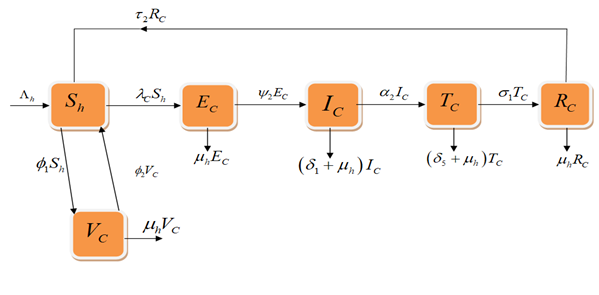Numerical Solution of Fractional Order Chlamydia Model Via the Generalized Fractional Adams-Bashforth-Moulton Approach
Keywords:
Chlamydia, Fractional, Adam-Bashforth-Moulton, Transmission, Control, StrategiesAbstract
In the present paper we offer the epidemiological parameters of the Chlamydia infection and discuss its dynamics with the help of a fractional-order mathematical model and estimating the role of contact and vaccination rates in the development of interaction with this disease. The conditions of existence and uniqueness of solutions of the problem in the environment of a fractional order were determined. Numerical simulations are carried out to show how the model parameters and fractional-order influence the disease control and their propagation property through the use of the fractional Adams-Bashforth-Moulton method. Additional simulations show that a rise in contact rates and a subsequent reduction of the efficacy of vaccination are the involved factors that contribute to the increase of the prevalence of the Chlamydia. The findings indicate that a preventive strategy to reduce transmission of the infection is a verified method of valuing the low level of the infection transmission over the population

Published
How to Cite
Issue
Section
Copyright (c) 2025 Journal of Science Research and Reviews

This work is licensed under a Creative Commons Attribution-NonCommercial 4.0 International License.
- Attribution — You must give appropriate credit, provide a link to the license, and indicate if changes were made. You may do so in any reasonable manner, but not in any way that suggests the licensor endorses you or your use.
- NonCommercial — You may not use the material for commercial purposes.
- No additional restrictions — You may not apply legal terms or technological measures that legally restrict others from doing anything the license permits.




